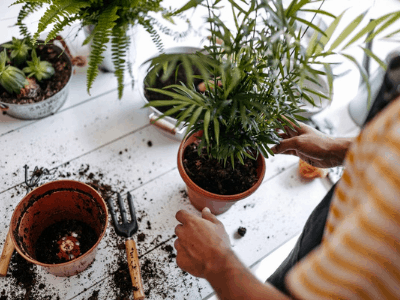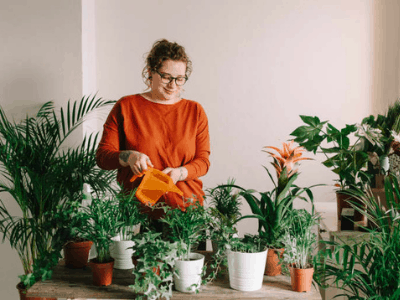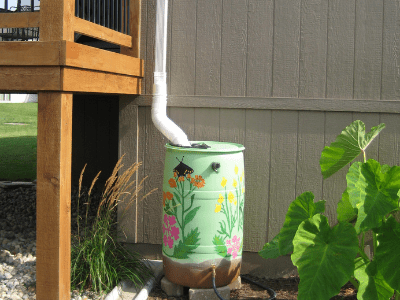It’s spring and it’s time for you to let your houseplants out again…
But, you should remember that these houseplants need certain care…
… before they are let out due to the changes of environment.
Hear it from Justin!
In winter, I winterize my houseplants so they won’t freeze from the snow…
Then, I let my houseplants out again in spring…
These two processes have something in common…
… that they both require time of adaptation.
This is exactly why the beginning of winter and spring are sort of my favorite time of year…
Because I can be with my houseplants, taking care of them, and keep them alive!
The journey of moving my houseplants in and out put me at ease…
… because I can make sure my houseplants survive the changing seasons.
Don’t that motivate you?
It is important to moving houseplants outdoors during spring…
Especially for plants that require the sun more…
So, without further ado, let’s figure how to do this out!
Spring Houseplant Care: Check On This Checklist!

In the spring, houseplants emerge from their long winter rest..
..so they require special care…
Follow this checklist to find out what you should do…
… to take care of your houseplants during this crucial time.
Clean the Leaves

There’s nothing wrong with spring cleaning your houseplants…
… since dust settles on their leaves just like it does on your furniture.
A layer of dust on the leaves of your houseplants will block sunlight and reduce the plant’s ability to photosynthesize. Photosynthesis is how the plant feeds itself. Without it, you‘ll have a stressed plant.
Marie Iannotti of The Ohio State University
Clean indoor plants in the spring by taking them outside…
… and spraying the leaves with a gentle spray of water from the garden hose.
This will help the plants look better and stay healthier…
You can rinse the leaves using tepid water in the sink or shower…
You can also wipe the leaves with a damp cloth instead of taking them outdoors…
Avoid applying leaves polish or waxes to them, because those products can clog the pores…
They can also harm your houseplants…
It’s more effective to use liquid soap diluted with water to wash the leaves…
Test a few leaves before washing the entire plant…
Repot Houseplants That Need It

Plants will grow better and do better if they are repotted in the spring…
This will lead to fresh, new growth, and give the plants more room to expand…
However, don’t automatically repotted every household plant in the spring…
… only do it for plants that actually need it.
Some plants are sensitive to repotted roots, and may take time to recover…
You should definitely give your houseplants a fresh start for spring…
… by putting them into a larger container if any of them are clearly outgrowing their container.
Houseplants that outgrow their pots typically show these symptoms:
- The roots grow out of the soil, or grow too much over the surface of the pot.
- The pot seems to be about to burst.
- The water merely passes through the soil without sinking in.
- It looks like the roots inside the pot are growing in a circular pattern.
Slowly Acclimate Them to Being Outside
You should transition your indoor plants gradually to living outdoors in the summer…
… because they benefit from being outdoors.
But don’t move them out there suddenly…
Slowly acclimate them to living outdoors with the sun…
You may not imagine it, but houseplants can get sunburned just like human beings do…
Houseplants have been conditioned to live indoors for years…
… where there’s no wind, heavy rain, or wildly fluctuating temperatures.
The best way to prevent major damage to your houseplants in spring…
… is to move them into the sun and rain gradually over a few weeks and to not leave them out at night…
… until the nighttime temperature is consistently above 50F.
It is easiest to start them in full shade for several days…
After this move them to a spot where only morning or afternoon sun will shine on them…
Leave them there for about six weeks before moving them to a sunnier location…
Check your plants daily. If they are getting too much sun, remove them to the shade for a few more days…
If an early yellowing, white, or transparent leaf appears, this means they are receiving too much sunlight…
Also, make sure your pots have drainage holes so your houseplants do not drown…
If they do not have drainage holes, they will drown…
Water More Frequently

Spring is a great time to start watering your house plants more frequently since they’re waking up…
Making the transition into the growing season easier for them will benefit them greatly…
When it comes to indoor plants…
It’s best to keep the soil evenly moist throughout the spring and summer months…
Be sure to check the soil weekly in the spring and to water when it starts to feel dry…
You should never water your garden automatically…
Always test the soil by sticking your finger one inch into it.
If it seems wet, then do not provide anymore water…
Start Fertilizing Again
As spring signals the start of the houseplant’s active growth season…
… now is an excellent moment to fertilize your houseplants.
Bear in mind that your plants are just coming out of their winter dormancy…
In order not to shock them, it would be best to start slow…
… rather than giving them full strength doses right away.
Otherwise, they may not adapt well to the process…
I recommend using liquid fertilizer in quarters or half doses at first…
… then gradually increasing it to full strength by summer.
It’s also best to use organic products rather than synthetic chemical ones…
Plants that are re-growing after a long period of dormancy…
… are more sensitive to harsh chemical fertilizers, which are a concern in the spring.
If you prefer, you can add slow release granules to the soil rather than using a liquid…
The organic liquid that you use for most houseplants is generally good…
… and you can also add organic compost tea.
Prune Any Weak or Leggy Growth

It’s best to trim your houseplants periodically…
… to remove any damaged or dead branches or leaves, and to clean them up.
During the winter, some houseplants become leggy or weak looking…
In spring, pruning houseplants encourages branching and healthy new growth…
Trim away dead or dying foliage, and remove brown leaf tips and edges…
You can remove dead flower spikes from houseplants…
… by trimming them down to the base or prune any scraggly looking branch tips.
Precision pruner bonsai shears work great for houseplant pruning…
Capture Rainwater for Your Houseplants

If you have any houseplants, rainwater is the best kind to use, and it is free!
Make sure your rain barrel is set up as early as possible in the spring…
… so you can start collecting rainwater for your indoor plants.
If you do not already have one, I strongly suggest you purchase one…
When you use rainwater instead of tap water on your houseplants…
… you will notice an improvement in their health and vigor.
Give Your Houseplants Some Air
The warmer spring days are a great time to open your windows to your indoor plants…
… and give them some fresh air and humidity.
This is a great way to get them used to living outside this summer…
You can still benefit your houseplants if you don’t plan on moving them out…
… as long as they get good air and all that humid air that comes from the open windows.
Move Them Out of That Sunny Window
With longer days and more intense sunlight in spring…
… indoor plants near a south-facing window will be burned.
However, that increased sunlight can also damage softer plants…
That’s right, they can get sunburnt right through the glass!
In fact…
A sunny window can even create a greenhouse effect for them, which may be too hot for some…
You should move any sensitive indoor plants you placed on the sunny window ledge in the winter…
… into more shade in the spring before the sun gets even hotter over the next few months.
The minimum thing to do is watch over them…
If you notice any of the leaves turning white or brown…
… that indicates they’re receiving too much sunlight.
So move them farther away from the window…
To sum it up…
Moving your plants out during the summer is important…
You should also keep in mind the different needs of plants during the process…
There are care routines needed for each plants moving in the spring…
… and considering each one will be very much appreciated by your plants!
That’s why, refer to the guide above when the time comes for you…
… to enter spring and move your plants outside.
Conclusion
If you still have any questions on the matter, let us know!
You can comment down below or contact us…
Check out more posts on our website like this one here!
Have an awesome gardening journey!


